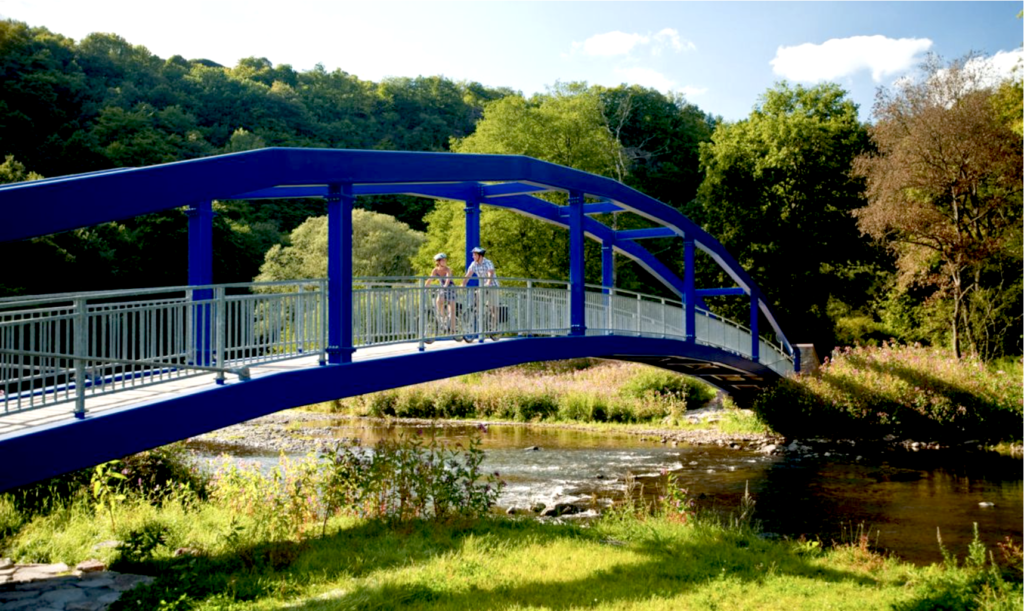May 8, 2022 - Eight EU member states have made clear references to EuroVelo in their national cycling strategies, setting goals for the further development, promotion, digitalisation and economic exploitation of the European cycle route network.

The European Cyclists’ Federation (ECF) has recently published a report on national cycling strategies in Europe. The report, titled “The state of national cycling strategies in Europe,” reveals that eight EU member states have made clear references to EuroVelo, the European cycle route network.
A big step forward for EuroVelo, its inclusion within these national cycing strategies highlights its importance as an essential element of the cycling infrastructure across Europe. According to Matej Zganec, ECF’s Policy Intern and one of the report’s authors, the role of the EuroVelo network in the national cycling strategies is critical for improving cycling conditions across the continent.
What is a national cycling strategy and what’s in it for EuroVelo?
A national cycling strategy is a multi-year plan that establishes a global vision aimed at coordinating policies, objectives and actions for cycling. It sets clear interventions, instruments and precise goals for the development of cycling at the national level. In short, a national cycling strategy ideally consolidates all policies taken at national level in support of cycling, hereby sending a political signal that cycling matters and that it should therefore be supported systematically by public authorities, businesses, academia and civil society organisations.
In a recent report , ECF looked at 47 countries in the pan-European region, and found that 23 of them have at some point adopted a national cycling strategy. The most common themes found in these documents are the promotion of intermodality or legal changes to the countries’ highway codes, however, EuroVelo has been included in eight national cycling strategies, namely those of Austria, Czechia, Denmark, Germany, Hungary, Latvia, Slovakia and Spain.
Recognising the economic benefits of cycling tourism
Cycling tourism contributes more than €44 billion to the European economy every year! A study commissioned by the European Parliament estimates that the EuroVelo network itself, once finished, will generate €7 billion of direct revenue each year. This enormous potential is slowly but surely being recognised by national governments.
The main focus of the Latvian national cycling strategy is to fully harness the economic opportunities that cycling tourism has to offer. In fact, the stated goal of the Strategy is to tie up to 20% of the total tourism offer in Latvia to cycling. Much of the effort is placed on developing the attractive coastal routes of EuroVelo 10 – Baltic Sea Cycle Route and EuroVelo 13 – the Iron Curtain Trail, as well as the national “Green Ways” cycling routes. Additionally, the State level shall promote EuroVelo routes and cycling tourism more generally through its promotion and marketing tools.
The German strategy, sees cycling tourism as an important part of regional economic development in rural and structurally weak regions. To achieve its stated goals of more German citizens cycling for leisure as well as more foreign cyclists on domestic cycling routes, the Strategy aims to upgrade and expand the German sections of the EuroVelo network.
In its own national cycling strategy, Spain recognises that the local EuroVelo routes are clearly lagging behind other national and regional cycling routes in the country, such as the high quality “Caminos Naturales” and “Vias Verdes”, as well as neighbouring countries’ EuroVelo infrastructure. For this reason, one of the strategy’s “Blocks” is dedicated to the design, planning and development of a general network of multilevel cycling routes. These would create and interlink local, regional, state and European (EuroVelo) routes. Subsequently, public administration bodies should carry out an informative role based on a clear strategy to promote EuroVelo routes. Such action is expected to result in a considerable boost to cycling tourism in Spain.
Hungary set as its goal the development of 700 km new national/European cycling routes and their maintenance. The main beneficiaries are local EuroVelo routes in addition to the Budapest-Balaton route and the Balaton Cycle loop – pearls of Hungarian tourism and part of EuroVelo 14 – Waters of Central Europe. Ensuring more safety, convenience and attractiveness of the routes are top priorities stated in the Strategy.
More promotion through digitalisation
In some instances, countries have gone the extra mile to ensure better promotion of their EuroVelo routes by utilizing digital tools. The Austrian national cycling strategy plans to integrate EuroVelo 13 – Iron Curtain Trail into the popular online route planer “Alpstein”.
At the same time, the Czech strategy intends to leverage analytical data to better incorporate its cycling routes into the urban and landscape planning documents. Ultimately, the Strategy outlines a more ambitious marketing plan in order to boost the awareness of the four EuroVelo routes that span through the Czech Republic. By adding national coordinators on top of existing voluntary associations and by introducing a unified Cyclobarometer, which would track cyclists’ figures and movement patterns along the routes, EuroVelo segments will be able to benefit from more complex marketing.
Standardised signalisation and delineation of competences
A near universal feature included in the eight national cycling strategies is the broad instalment of standardised signing along their respective EuroVelo routes. On the other hand, few national cycling strategies have opted to outline in them the body/organisation responsible for the coordination or development of local EuroVelo segments.
EuroVelo advocacy and other approaches
One very positive and extremely relevant addition to the content of national cycling strategies comes from Czechia. This strategy openly advocates for the integration of EuroVelo cycling routes into the TEN-T network. It is exactly ECF’s view that the integration of EuroVelo into TEN-T would release European financial resources for implementing the missing sections of the EuroVelo network and directly contribute to meeting the TEN-T objectives. Currently, the major deterrent to the further development of EuroVelo routes in Czechia is the ineligibility of municipalities for state subsidies to cycling infrastructure. Cases like this underline the importance and urgency of such a decision.
In conclusion, we highlight one of the six outlined characteristics of a good cycling network according to the Danish national cycling strategy. It is understood that cycling routes need to begin and end in places that constitute natural cycling stops – traffic hubs, service facilities and possibilities for experiences. This is why the Strategy prioritises interlinking all national cycling routes with the EuroVelo network, as a prime example of a natural traffic hub. In Denmark, as elsewhere in Europe, the EuroVelo routes act as a backbone to the growing national, regional and local cycle route networks.







